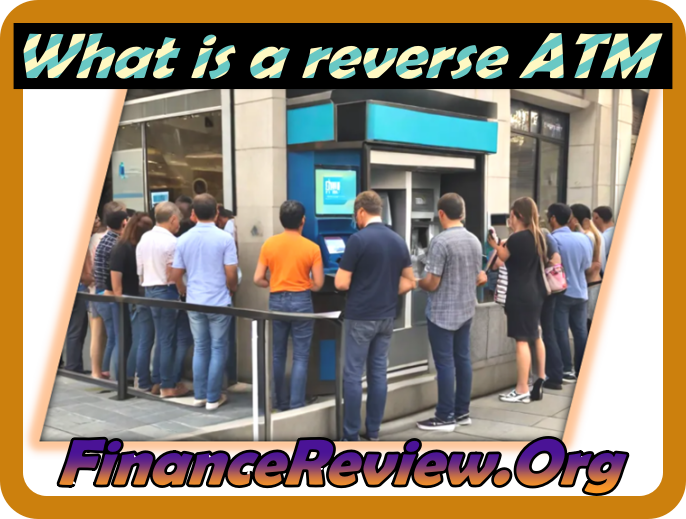Unlike regular ATMs that dispose of cash, reverse ATMs take cash deposits and convert them into electronic money. Further, the digital money is transferred/updated to a prepaid or debit card. A reverse ATM kiosk is a facility where people can load cash for a new prepaid card or onto an existing debit card using an ATM with this specific feature. Let’s learn more about What is a reverse ATM.
Key Facts about What is a Reverse ATM
- Reverse ATMs process cash-to-card transactions instantly compared to traditional methods.
- Several reverse ATMs allow users to load funds onto store-specific cards and even credit cards!
- They show a real-time balance of prepaid or loaded cards.
What is a reverse ATM used for?
- Promoting Digital Transactions: They help transition from cash to electronic payments.
- Improving Accessibility: They allow people without traditional banking services or plastic cards to perform card payments.
- Enhance Convenience: They simplify the process of cash conversion.
- Access to Digital Payments: They enable cash-only users to transfer amounts to their digital accounts.
- Financial Inclusion: They support underserved communities in accessing electronic payment systems.
- Ease of Use: Cards issued at reverse ATMs are similar to using debit cards.
- Security: They reduce the need to carry physical cash. Hence decreasing risks of theft.
- Convenience: They offer a hassle-free method to transfer cash without going to the bank.

What are the limitations of Reverse ATM?
Reverse ATM Fee
- Fees for using reverse ATMs vary based on location and service, such as only issuing a new prepaid card, transferring funds to an existing card, number of transactions, percentage of the amount, reloading options, purchase and maintenance cost of ATM, dormancy fee, and interchange fee paid by the merchant. Due to the limited availability and use of reverse ATM in the USA and Europe, a specific fee amount is not yet standardized.
Limited Availability
- At least in current times, all locations and ATMs (including rural areas) do not have reverse ATM facilities.
Card Limitations
- Prepaid cards from some specific financial institution’s ATMs may have restricted usage.
Technical Issues
- They may experience malfunctions. Sometimes, the deposited cash doesn’t get updated on the card.
Reloading services
- Reloading cash onto an existing or newly issued card requires additional measures, cluing What is a Reverse ATM. Hence, reverse ATMs of only a few financial institutions support reloading services.
Why Are Businesses and Institutions Preferring Reverse ATMs?
Enhanced Customer Experience
- Its cards align with modern payment options. Hence, the cost of cash management decreased, and unmanned PoS facilities increased.
Increased Efficiency
- They synchronize/organize digital payment handling processes at business institutions.
Financial need
- They support small and bulk PoS and online payments via prepaid cards and answered What is a Reverse ATM.
Revenue Opportunities
- Transaction fees from reverse ATMs created additional revenue opportunities for financial institutions.
What is a Reverse ATM – Final Verdict
People are moving away from traditional ATM features as the rise of digital wallets, online banking, and electronic transactions have become convenient. Further, many business institutions are promoting cashless payments. In addition to transaction fees and annual Card charges, ATMs have become vulnerable to card skimming. Therefore, it answered What is a Reverse ATM and why are they trending. For more finance and banking stories like and subscribe to FinanceReview.org.



GIPHY App Key not set. Please check settings